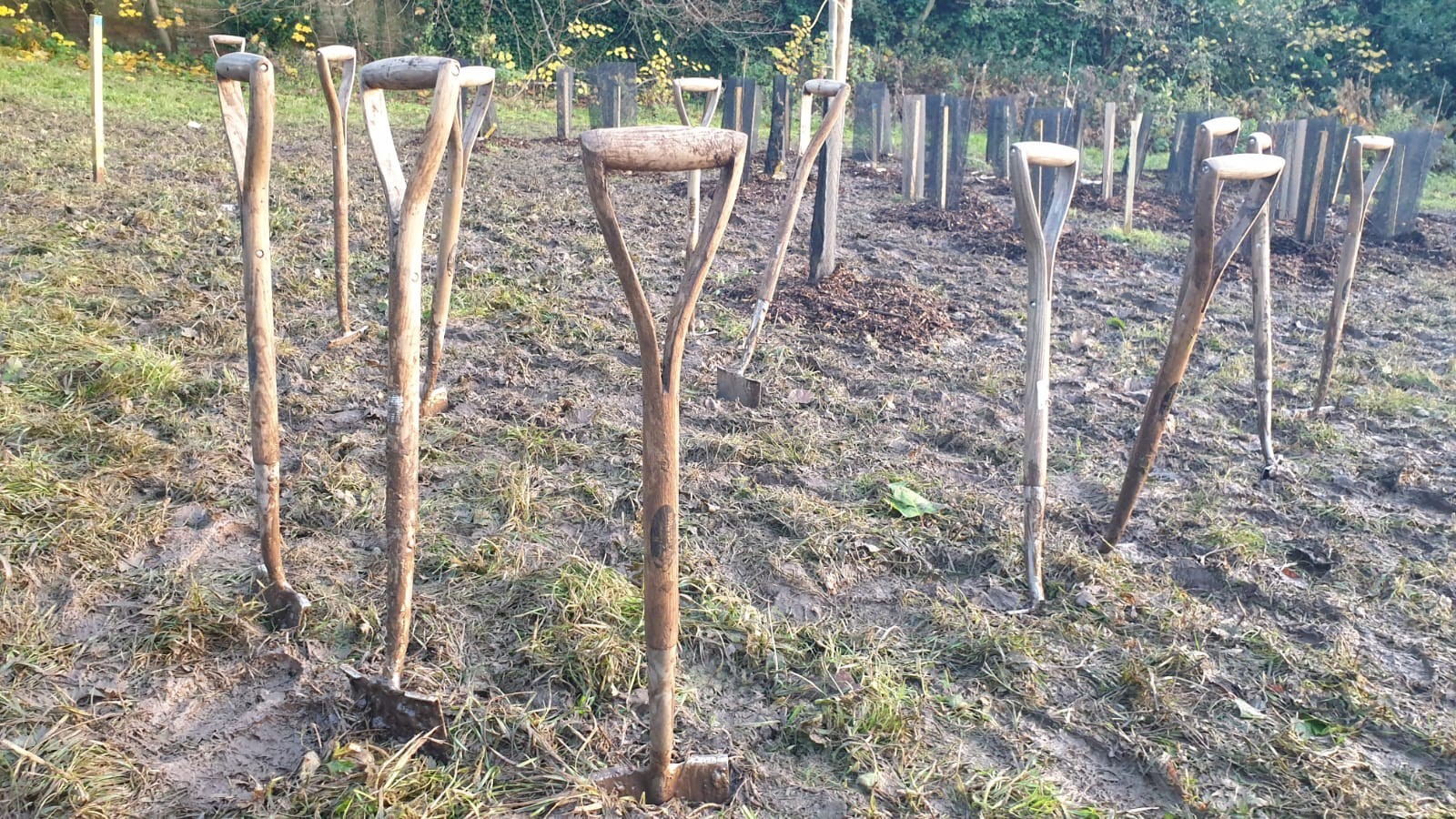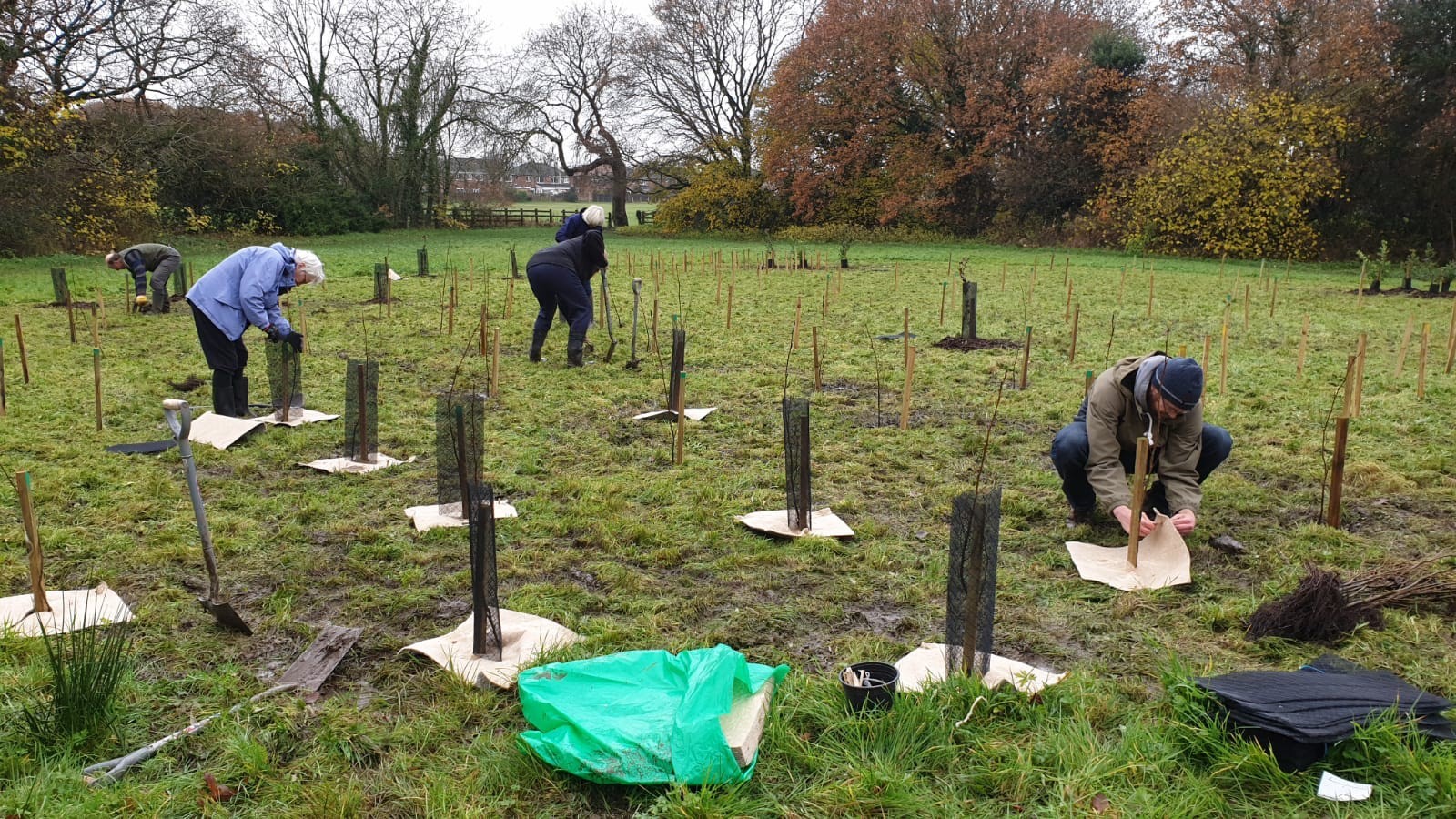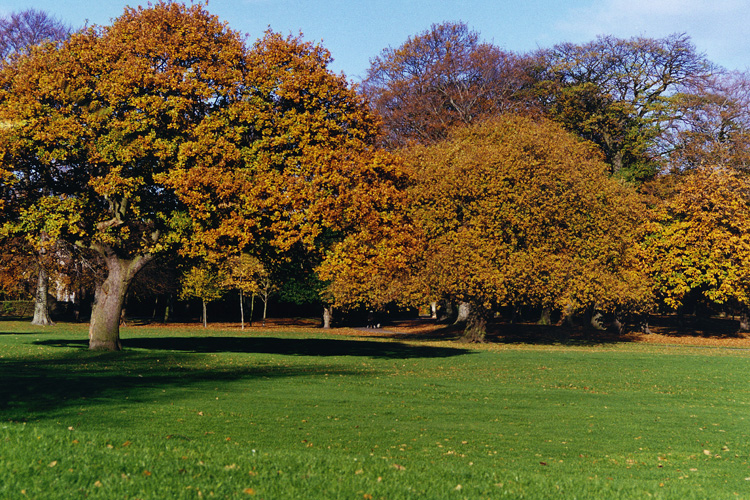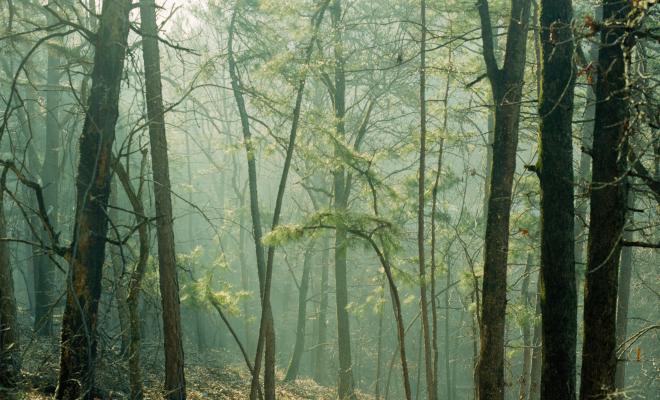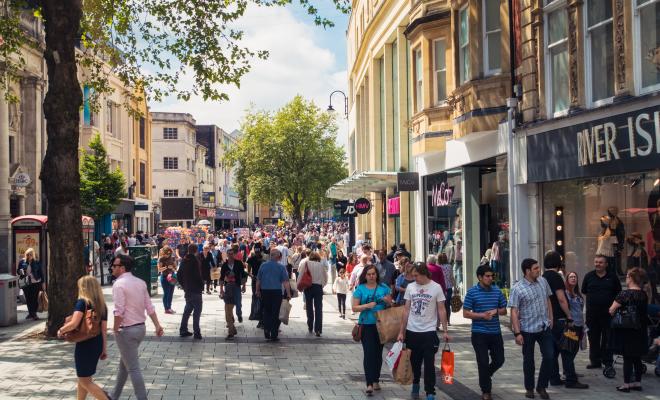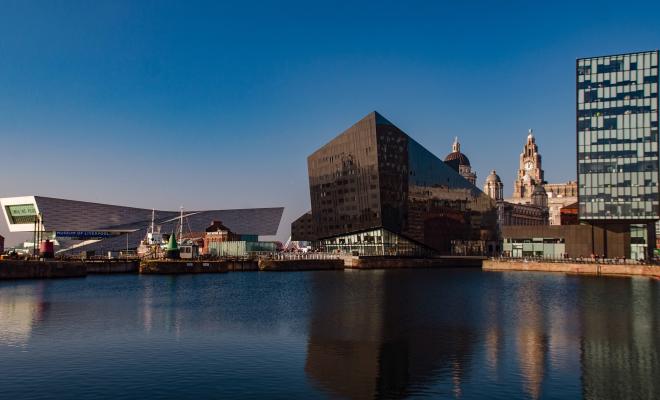20 Sep 2024
How is Action 45 tackling the climate crisis?
The ability of trees to capture and store carbon means they have an effective role to play in combatting the climate crisis alongside emissions cuts. Tree planting also wins support right across society, and so is a great way to get communities and council partners on board with climate action.
In recognition of this, Wirral Council has created a detailed and ambitious 10-year strategy to safeguard local trees and plant hundreds of thousands more, on and beyond council-owned land.
The Wirral Tree, Hedgerow and Woodland Strategy 2020-2030 was developed in collaboration with an impressive network of partners including tree wardens, community groups, private, charitable and community landowners, and local and national tree organisations. It has 3 elements: participate, protect and plant.
Participate relates to encouraging the kind of robust community support that'll be vital for the success of the strategy.
Protect recognises that planting new trees isn't enough, as a sapling doesn't deliver the same environmental benefits as a fully matured 300-year-old tree. Therefore, existing trees must be cared for, because retention is preferable to planting.
Finally, to complement the safeguarding of existing trees, the authority will plant 21,000 new trees every year for the next decade. Planting will be guided by the principle of "the right tree for the right place". Correctly sourcing, planting and maintaining trees will enable the Wirral to nurture a diverse and resilient stock of trees of varying ages and species. The 210,000 new trees will increase Wirral’s canopy cover from 13% to 25%.
The council began consulting on the strategy in late 2019. It officially came into force in August 2020 and planting began in January 2021, the earliest planting season after the strategy’s enactment.
The council is taking its approach extremely seriously, with the tree strategy reviewed annually by the council and its stakeholders. A cross-disciplinary working group will also track the effectiveness of the strategy over time. The council hopes that this first decade will be the strong foundation for a vision spanning the next 50 years and beyond.
What impact has the project had?
Ahead of target
By July 2022, 45,559 trees had been planted across the Wirral since the launch of the strategy, putting the council well ahead of its annual target of 21,000 trees, despite the complications of coronavirus. The pandemic limited community planting in 2021, but this problem was offset by other developments – contractors were able to carry out early planting, as were schools (which were subject to different social distancing guidelines). Of the trees planted so far, 700 arrived through the Urban Tree Challenge, 10,000 via the Eco Schools programme involving 32 schools, and a further 10,000 were planted in 2 new woodlands in conjunction with Mersey Forest contractors. In the 2021/2022 planting season (autumn to spring), 26 community planting events and 15 school planting events were hosted.
Forging community links
The tree strategy has also prompted the creation of the Wirral Initiative on Trees, which brings together some of the council’s key partners. These include but aren't limited to: Wirral Tree Wardens, the Friends of Wirral Parks Forum, Wirral Environment Network, The Wirral Society, Wirral Wildlife, the Urban Beekeepers Association, and Wirral Countryside Volunteers. The Wirral Initiative on Trees is an indispensable forum for sharing information about the tree strategy with communities and also gathering their feedback.
Of the trees planted in 2022 alone, approximately 98% were planted by communities. The council has been overwhelmed by the popularity of planting events, which have been well attended. The council has also experimented with creative ideas around planting to get different groups and people involved. For example, Wirral’s foster families were invited to a special planting session where parents and their foster children planted a woodland dedicated to them – using tree planting to highlight other needs across the council’s frontline services. The community also came together to plant a COVID-19 memorial woodland, funded by Trees for Climate.
Wirral already has an adopt-a-tree scheme for individual residents who wish to take care of individual trees on or near their property. In addition to this, the council is launching a tree guardian maintenance programme, looking for community groups to “adopt” planting sites and take responsibility for their ongoing maintenance. A similar sponsor-a-tree scheme will be launched aimed at businesses.
Projected carbon impacts
It's projected that by 2030 the Wirral Tree Strategy will have led to the sequestration of 222 tonnes of carbon. In 2022 a study by forestry organisation Forest Research will collect data across all trees in Wirral to provide a baseline understanding of what the treescape is currently delivering, against which the real impact of the tree strategy can be measured. Once completed (in March 2023), the study will enable the council to pinpoint and target planting for specific purposes that aren’t presently being fulfilled – for example, flood prevention.
What made this work?
Partnership working
The strategy involves a huge amount of collaboration. The council was keen to make use of external expertise and input from specialists. As well as insights from the groups that joined the Wirral Initiative on Trees and public input obtained via consultation, support came from partners including the Tree Council, Forestry England, Natural England, Urban Trees and the Woodland Trust. Drawing on a wide range of existing knowledge on trees allowed the council to implement its project without starting from scratch.
Political co-operation and commitment
The strategy passed with fervent all-party support on a council with No Overall Control. The council also benefited from the enthusiasm of one councillor as a key champion of the strategy.
Cost-effectiveness
Expanding tree cover is people-intensive, but in Wirral much of the tree planting will be carried out by a cohort of volunteers offering their time. Wirral Council also made use of free online tools such as i-tree, a platform that estimates tree canopy cover and can measure the structure and composition of trees.
Multiple co-benefits
Trees provide a host of social, health and economic benefits on top of their positive environmental impacts. Trees can help reduce noise, create a feeling of safety within communities, and generate a sense of place, identity and pride in local areas. Trees also improve air quality, boost mental health, and create more attractive environments for outdoor exercise. Economically, the aesthetic value of trees can increase property values, boost tourism and recreation revenue, and improve the productivity of employees.
Accessibility and community engagement
There's no financial barrier to volunteer-based tree planting, so it's an activity in which, ability permitting, most people can participate. The council will host community planting events where it'll supply necessary equipment like spades and mulch. The council intends to publish volunteers’ stories on social media to demonstrate the diversity of people taking part and gain buy-in from a variety of demographics.
With dozens of locations earmarked for new trees across the Wirral, residents should be within reach of at least one tree-planting opportunity. If not, the council accepts suggestions for new locations directly from residents. Tree-planting initiatives are easy for people to understand (unlike some other climate interventions), and it's therefore easy to promote them and secure involvement. Community engagement, connection and cohesion are further co-benefits that flow from the accessibility of tree planting.
Previous work on trees
Between 2018 and 2020 the council had already successfully worked with schools, children and families to plant over 15,000 trees.
What resources were needed?
Writing the strategy didn't create any external costs. It was produced by a team of 4-5 people at the council with regular editing and input by stakeholders over roughly 12 months.
The council is using a variety of streams to fund the tree strategy. These include the UK government’s Urban Tree Challenge Fund, Mersey Forest’s Trees for Climate budget, and the council’s own dedicated climate emergency revenue budget. It also intends to apply to the council’s capital finance programme.
In 2020 the council was successful in obtaining £249,630 from the Urban Tree Challenge fund and agreed to match this funding, amounting to a total £600,000 for 1,600 new street and parkland trees in 50 locations across the borough. A further £23,743 grant was received from Mersey Forest, which covered all costs for 2 woodlands comprising 9,306 trees. Furthermore, Earthwatch has supported Wirral’s first 2 “tiny forests”, funded by the Department for Environment, Food and Rural Affairs (Defra).
English local authorities can also access the government’s England Woodland Creation Offer – grants to support the creation of new woodland launched in June 2021.
To carry out the strategy, the council has established several additional posts to bring new in-house expertise on board. These include a new role of Landscape Manager for the Tree Strategy, working alongside a tree risk manager and 4 tree inspectors.
Lessons from Wirral
Include protection for existing trees
It's important that tree strategies include protection of existing trees, and restoration of existing woodland, wherever possible to ensure maximum impact on climate and biodiversity. The council also found that this was essential to gain public support.
At the public consultation stage, Wirral Council received many positive responses to the proposed strategy, but also encountered emphatic opposition to felling trees under any circumstances. There was some scepticism about the plans because the council had felled 2,225 trees in the years leading up to 2020. As a result of this strong feeling, the strategy now clearly states that felling is always a last resort. Other councils should anticipate a strong reaction to any past or current felling of trees and be prepared to respond to concerns. In the Wirral, once planting got underway, trust was built through visible action, allaying public anxieties.
Land availability
The council expects that for the first 4 planting seasons under the new tree strategy, all new trees planted will be on council-owned land. However, it’s anticipated that there’ll be difficulty finding available land in the final 6 years covered by the strategy. The council is preparing for this scenario by exploring options such as partnering with housing associations, which often own land suitable for tree planting.
Supply and demand
Tree saplings are likely to become harder to obtain as tree planting schemes expand across the UK. Wirral is intending to mitigate this predicted lack of supply by establishing its own tree nursery facilities, in order to grow its own trees to keep the council’s planting targets on track.
The right tree in the right place
The replicability of Wirral's approach to increasing tree coverage will depend on local geography. Strategies should be tailored to the local landscape and ecosystems, although some principles such as "the right tree in the right place" are universally applicable. Wirral was already home to 8 Sites of Special Scientific Interest (SSSIs), which the council owns parts or all of, plus existing woodlands at Dibbinsdale, the Dungeon, the Beacons and Eastham Country Park. Other parts of the UK will differ to the Wirral in the degree of urbanisation relative to forested area, or may include valuable habitats where tree planting is inappropriate (for example, grasslands, marshlands, sand dunes etc).
Work across boundaries
Trees, forests and woodlands cross political boundaries. Councils may need to work with neighbouring councils or encourage neighbours to implement their own measures to protect trees and increase tree cover. Trees are a relatively apolitical subject, as evidenced by the agreement between parties on Wirral Council – this should facilitate the cross-boundary, cross-party partnership.
Importance of good data
An extremely important lesson for councils looking to expand their own tree coverage is the need for good data. In Wirral, the council has created a comprehensive database that catalogues all of Wirral’s existing trees. Each new tree planted is entered into an inventory and given a unique reference number. Using tools like i-tree enabled the council to map trees, their condition and their ecosystem value. This made it easier to identify gaps in which to fill new trees, or those locations where new species needed to be introduced to increase resilience. Good-quality, up-to-date data on trees is crucial.
A long-term commitment
A further lesson is that tree planting isn't a "quick win". To deliver their full benefits, trees need to be nurtured into maturity. Councils must know that this is a long-term commitment because many tree-planting schemes fail due to poor follow-up care. The pay-off on indicators like air quality may also not be immediate.
Good communication is vital
Finally, councils need to develop a strong communication strategy and education campaigns, otherwise they won't secure the volunteers needed to plant significant numbers of trees. Keeping local people on board and giving them ownership is the lifeblood of the Wirral’s Tree Strategy. Education is important to teach communities and residents how best to take care of the trees they plant and, indeed, to get them to care about trees in the first place. Councils with an existing pool of climate champions have manpower ready to mobilise for tree planting.
Wirral View, the council’s news outlet, publishes a bi-monthly newsletter dedicated to local stories on the environment and climate change.
“The Wirral Tree Strategy recognises that community involvement, participation and ownership will be fundamental to its success.”
Councillor Elizabeth Grey, Chair Environment, Climate Emergency and Transport Committee.
Useful information
Information in this case study was sourced from the extended Wirral Tree Strategy. It includes extensive references to key documents, relevant legislation, academic research and weblinks. It also includes an appendix titled "The Right Tree in the Right Place – Deciding What to Plant", which is a guide for tree planting.
If you want to find out more about the Wirral Tree Strategy, please contact:
- Mike Cockburn, Lead Commissioner for the Environment, or
- Nicola Wallbank, Landscape Manager.
Alternatively, visit the tree section on the council’s website.
Related projects
Several other councils are setting targets and strategies to increase tree cover in their areas.
- Leeds City Council is aiming to almost double tree cover in the area by 2050.
- Surrey County Council has developed a strategy for planting 1.2 million trees by 2030.
- Oxfordshire County Council is considering doubling tree cover by 2045.
Friends of the Earth's view
Wirral’s tree strategy is visionary and pragmatic, with an important emphasis on the right tree in the right place. The ambition to double tree cover, alongside initiatives to protect existing trees that are vital for nature, carbon storage and local communities, is very welcome. The council should apply this level of ambition to tackle climate and nature emergencies across all sectors.
In addition to setting out plans to increase tree cover, all councils should aim to ensure that everyone has access to nature-rich green space by protecting existing local green spaces and developing new green spaces in areas that fall short (Actions 46 and 48 in the Climate Action Plan). Councils should also cut the use of pesticides in parks and green spaces, including around newly planted trees, to boost nature and create a healthier environment (Action 47 in the Climate Action Plan).
Friends of the Earth is showcasing specific examples of good practice in tackling climate change, but that doesn’t mean we endorse everything that a council is doing.
This case study was produced by Ashden and Friends of the Earth. It was originally published in February 2022 and was last updated in December 2022. Any references to national policy in this case study relate to policy under the previous government and reflect the policy context in which the council was operating at the time.


